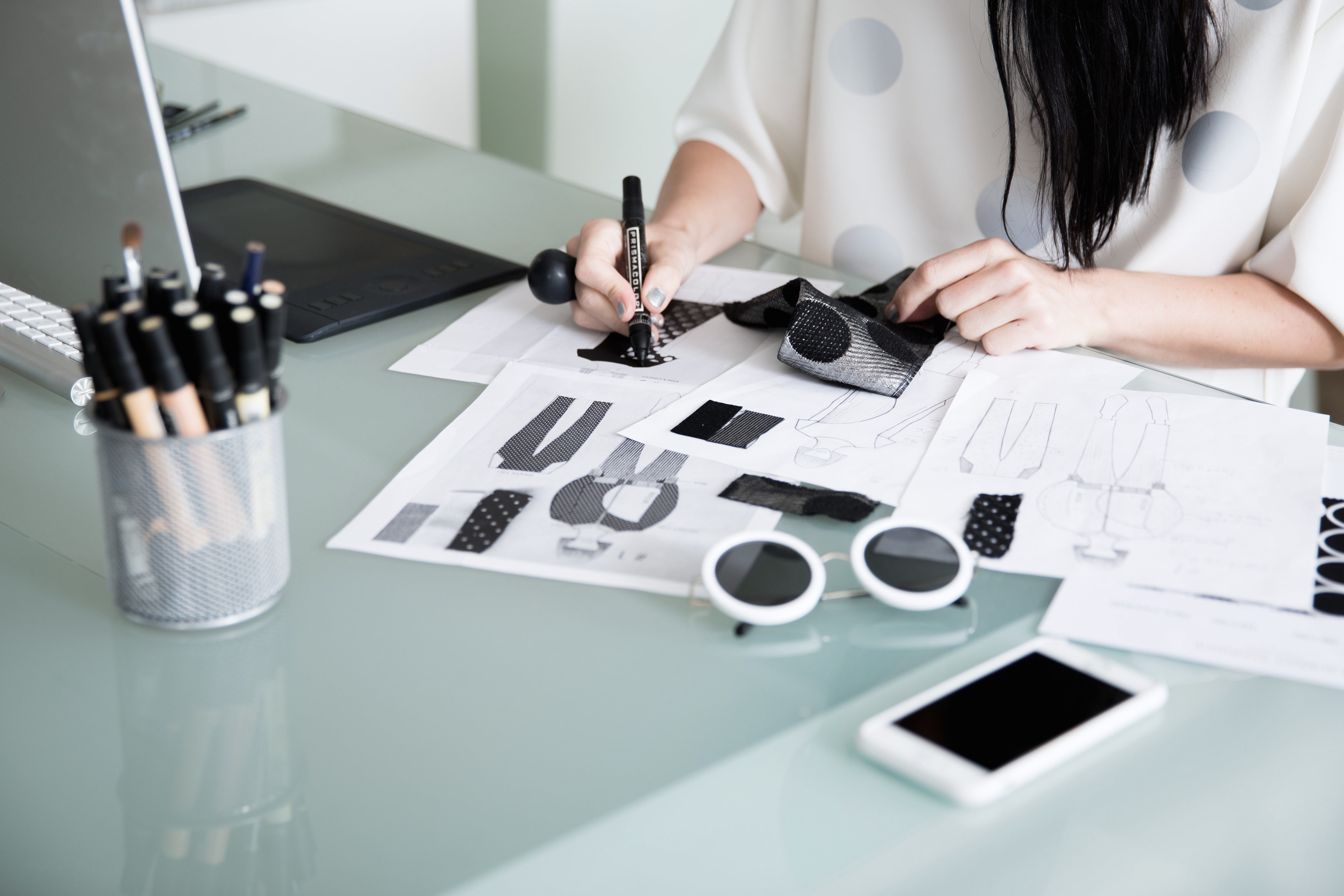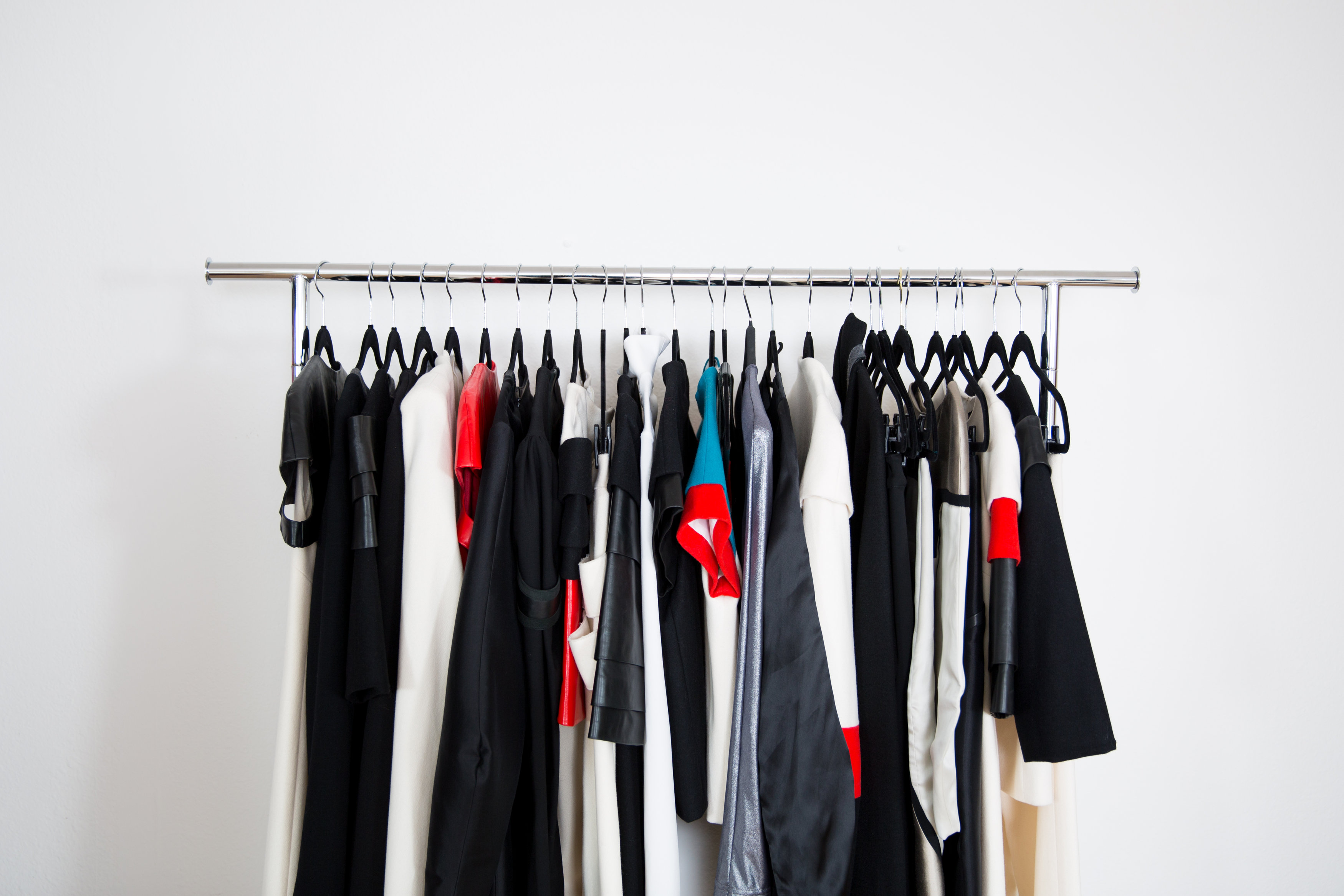
I always wanted to work in a creative field, I just didn`t know it is going to be fashion. I started with ballet, painting, graphic design, fashion illustration and then I started experimenting with fashion design. I just love discovering the hidden beauty around me and transforming that into fashion. ~ Camelia Skikos
Besides being the Lead Fashion Designer for Google’s top secret Jacquard project, as well as her own eponymous label, Camelia Skikos is also a design instructor at the Academy of Art university, and former Head Designer for Levi Strauss. Phiew, that’s certainly a lot to juggle. But this article isn’t about Camelia’s resume, it’s about her incredible creative journey from Romania, to London and finally San Francisco. Not only is she leading Google’s team towards creating wearable technology that’s much edgier, and well, actually wearable without any of the geeky Silicon Valley undertones, Camelia also manages to produce a fully realized collection that blows us away every season. It may seem like a lot to juggle, but for this Romanian designer, creativity is a privilege she rarely takes for granted. | Photography by Sarah Deragon.
. . . .
LW: Hi Camelia, can you tell us about your latest collection? What Inspired it?
I visited Moma museum on a trip to New York and I was struck by one of Victor Vasarely`black and white kinetic images. That inspired me to investigate the possible ways of rendering the concept of duality. My collections always express a little bit of tension between something that is more constricted and controlled and something less inhibited and free. Opposites create drama. Good and bad inevitably coexist in our lives. I interpreted my thoughts and views in this matter through the choices of fabrics, design details and the juxtapositions of shapes and contrasting colors.

My collections always express a little bit of tension between something that is more constricted and controlled and something less inhibited and free. Opposites create drama. Good and bad inevitably coexist in our lives.
LW: Sometimes we get lucky, and the universe comes down and helps us out right when we need it most. What was the one piece of magic in your life?
CS: I grew up in Romania while it was caged by communism and brutal dictatorship. The fashion industry used to be limited to just a few factories that belonged to the government and everything produced there looked like uniforms. Privately owned companies just didn’t exist. Most people were not allowed to travel outside the communist countries or have any access to information about what was happening around the world. As a designer you must be informed, explore, observe the world and experiment, reach conclusions and then break them. That was almost impossible during those times of restrictions and limitations. I couldn’t even dream of Fashion as a career. I was just designing clothes for me as a way to express myself, rebel, and to evade the uniformity of those days.
Once the Iron Curtain was off, everything started from zero. Because there was almost no fashion industry at the time, there were no rules so everything started from scratch, creativity flowing limitlessly. It was very powerful. That happened at a very critical moment in my life when I was just starting to try and figure out a direction in my life and career. The sudden freedom of being able to pursue a career in Fashion Design and the idea that I could finally choose my own path in life was astounding.

I grew up in Romania while it was caged by communism and brutal dictatorship…I couldn’t even dream of fashion as a career. I was just designing clothes as a way to express myself, rebel, and to evade the uniformity of those days.
LW: What did the clothing look like in Romania before the Iron Curtain fell?
CS: Clothes used to look very much like uniforms, all very similar, in dull colors, because they were all made in the same factory that was controlled by the communist government. People had to be creative if they wanted to wear something different. Most women used to buy fabrics and go to a seamstress to create their own designs. During communism everybody craved a little more freedom and individuality so fashion was one way to express that. Fashion can give a great amount of freedom to people and no matter what times we live in, it can allow them to be who they want to be.
LW: I’m from Poland, and growing up fashion simply wasn’t available to people – like jeans were impossible to get.
CS: Yes, there was no way you could find jeans in those times. In communist Romania, jeans simply weren`t available unless you knew someone who knew someone. People would be willing to pay their entire savings for a pair of jeans but they just couldn`t find any. I remember when my girlfriend was able to finally buy a pair on the black market (from a guy who knew another guy that was somehow able to travel to Germany) I was able to borrow them from her ones in a while. We used to take turns, all the girls in the neighborhood wearing the same pair of jeans.

Back then people would be willing to pay their entire savings for a pair of jeans but they just couldn`t find any. I remember when my girlfriend was able to finally buy a pair on the black market. We used to take turns, all the girls in the neighborhood wearing the same pair of jeans.
LW: That sounds kind of beautiful actually. Do you find that creativity was even more important in that environment?
CS: I think growing up in such a limited environment makes people even more curious about what is out there and eager to explore. Because there was no freedom of speech and everything you said could be interpreted as being against the regime, people had a strong desire to express themselves through different forms of art, it helped them get rid of a lot of anger and feel less limited.
Art and fashion was definitely a form of rebellion during those times. I remember how I was actually kicked out of school one day because I dared to modify my communist uniform during High School. I wasn`t allowed to come back to school until I bought a new uniform that looked exactly like everyone else’s. So of course, in my free time I would go crazy on designing clothes that were as different as possible. I didn`t think of it as fashion, it was just an instinctual need to express myself and escape.

Creating from a place of freedom rather than normative restrictions based on the ideals of other companies seemed more appealing to me. I really think that freedom is essential in order to create, and if I can`t create I don`t feel alive.
I think all the limitations and lack of choices were forcing everyone to use their imagination and creating their own things. Sometimes limitations can actually drive creativity. It was actually when I finally had no limitations that I found myself creatively stumped for the first time. When I moved to London and I worked there as a designer for a company that was giving me access to an amazing variety of choices, I was suddenly in front of all the supplies and fabrics I could possible imagine and I was stuck. I was just paralyzed by all the choices that I never had before. I finally had all the freedom and possibilities that I wanted and my inspiration just disappeared. That`s when I realized that all the limitations and obstacles that I was faced with while growing up in Romania were actually part of the source of my creativity.
As an artist you need to stay curious and use your imagination, it is much harder to do that when you suddenly have access to everything. It took me a while to get used with all the freedom and choices. I had to find different ways of getting inspired and limit all the distractions around me.
LW: Where were you working at that time?
CS: Before I moved to San Francisco and started my own line, I was a fashion designer and illustrator for various british companies in London. Most recently, I was Head Designer at Levi`s Strauss and also designing for other companies like GAP. While I enjoyed designing full time for other companies I was always in a constant need for more creative freedom and flexibility. Creating from a place of freedom rather than normative restrictions based on the ideals of other companies seemed more appealing to me. I really think that freedom is essential in order to create, and if I can`t create I don`t feel alive.
LW: What do you think is the most important personality trait for success?
CS: Adaptivity. Being flexible and willing to see things from different perspective is key. People who are willing to adapt to different situations are easier to work with and exude a better energy. Having a good attitude and the capacity to stay optimistic and positive. Nobody likes to work with people who bring bring lots of negative energy or complain all the time.
LW: What is your best piece of advice for someone who wants to follow in your footsteps?
CS: Emphasize the things that make you different. If the qualities that make you different are genuine and interesting enough, the world will just take notice… and even then, success is not a given but at least you had fun while you did it. Don`t take fashion too serious. That can make you feel limited and loose that urge to explore and express your ideas without limitations. Create, design, play… It`s great when a job turns into an adventure, when you get to build and create something that you really like.
*Photography by Sarah Deragon*



